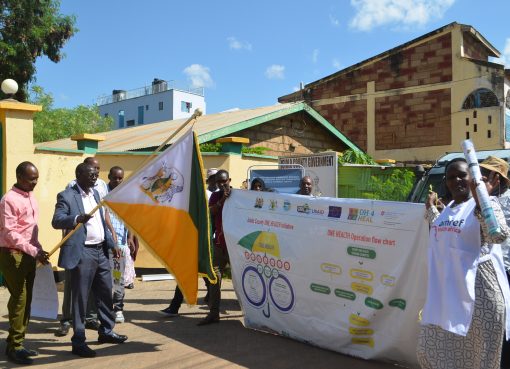A cash injection of Sh 81.9 million by the government through the National Agricultural and Rural Inclusive Growth Project (NARIGP) to boost poultry farming in Bungoma County has seen farmers’ earnings leap from Sh 33 million in 2018 to Sh 300 million currently.
The National Agricultural and Rural Inclusive Project (NARIGP) is a Government of Kenya and World Bank/ International Development Association (IDA) funded project.
The project covers Bungoma, Embu, Kisii, Homa Bay, Samburu, Kirinyaga, Nyamira, Turkana, Nandi, Makueni, Kwale, Meru, Vihiga, Kitui, Narok, Kiambu, Muranga, Kilifi, Nakuru, Migori and Trans Nzoia counties.
Before the intervention, poultry farmers in Bungoma had little knowledge on proper chicken rearing as a commercial enterprise. Farmers lacked the skills, knowledge and consistency to do the right thing.
As a result, hatching rates remained low and farmers experienced high chick mortality due to high disease incidences as they had limited knowledge on proper feeds leading to low productivity.
NARIGP County Coordinator in Bungoma, Ms. Rebecca Lusweti says the entry of the NARIGP project in 2018 changed everything. The project narrowed in on 20 wards in five sub-counties.
Madam Lusweti says NARIGP employed a Participatory Integrated Community Development (PICD) approach which enabled the communities in the five sub counties to align themselves to the chicken value chain.
Barazas were held at the ward levels that brought together poultry farmers and mobilized them into 264 common interest groups [CIG] of 25 members per group with each group developing a proposal along their respective value chain.
Ms. Lusweti says farmers were trained on the vaccination cycle, feeding, brooding and improved housing after which the 264 groups submitted their proposals to NARIGP secretariat at the county for funding.
Farmers were trained at each value chain stage i.e. input supply, production and marketing. They were also Farmers trained on disease and parasite management, proper housing, feeding, hatching, brooding, marketing and organizational management.
The farmers were then issued with feed formulation equipment and raw materials and taught how to formulate their own feeds.
The input supply value chain stages included chick incubation and feed formulation while production centered on chicken rearing aspects.
Chicken farmers received incubator machines, feed formulation machines, mixers and millers and constructed more than 100 chicken houses.
Through purchase of incubators, the hatching capacity increased to 10,000 chicks per cycle.
Lusweti says that through the project, farmers in the selected wards have increased the average number of live chickens per house hold to an average of 100 birds per farmer from an initial low of 10 birds.
She said farmers now enjoy chicken rearing as they have increased knowledge and have access to fertile eggs, chicken feeds, raw materials for feed formulation, vaccines, drugs and chicken marketing.
The number of birds has increased from 10 per farmer to 100 birds per farmer translating to 660,000 birds in project areas from an initial of 66,000 birds.
Lusweti says farmers are now able to formulate their own feeds reducing cost of production by 30% whereas improved housing and adoption of vaccination has reduced mortality rates by 50%.
The use of incubators has increased hatchability rates hence increasing the number of chicks per hatch.
Lusweti revealed that the groups after formation were federated into two producer organizations namely Webuye East Poultry Cooperative and Sirisia Cooperative.
The cooperatives signed a contract with SHIFFA Chicks limited who are running Chwele slaughter house in Bungoma County.
The contractual marketing arrangement has stabilized prices for live birds since they are bought at Sh 450 per live bird as opposed to eye assessment and feeling of the weight by hand.
According to farmers interviewed, feed formulation machinery has lowered the cost of production and increased supply of affordable feeds to the farmers. They have also opened 7 feed distribution outlets in the 5 sub-counties.
She said that the co-financing model where farmers contributed 10% of the proposal budget (Sh.9, 107, 302), and NARIGP contributed the remaining 90% (Sh 81,965,720) enhanced participation and ownership of the project by farmers.
Farmers linkages with Kenya Agricultural Livestock Research Organization (KALRO), a research institution through supply of improved indigenous chicken has increased productivity while market linkages with SHIFFA poultry farm at Chwele slaughter house has increased sales through aggregation.
According to Lusweti and several Common interest group (CIG) leaders who spoke to KNA, the CIG approach (CIG) to chicken production is the solution to commercialization and profitability.
She however pointed out that inconsistency in supply of electricity lowers hatchability percentage and proposed the use of solar driven hatcheries.
By Roseland Lumwamu





